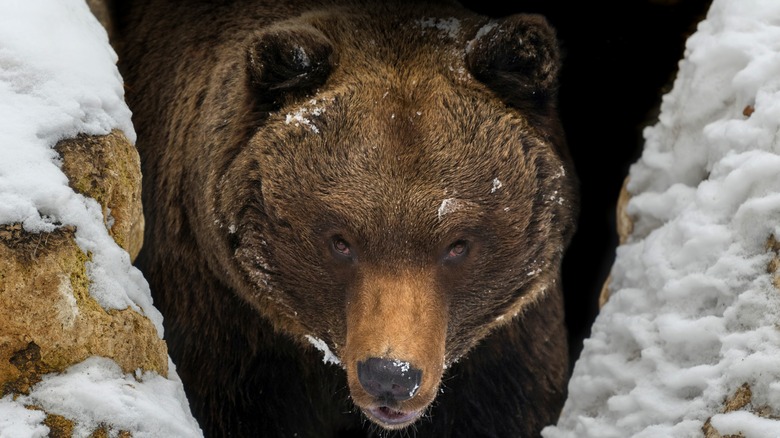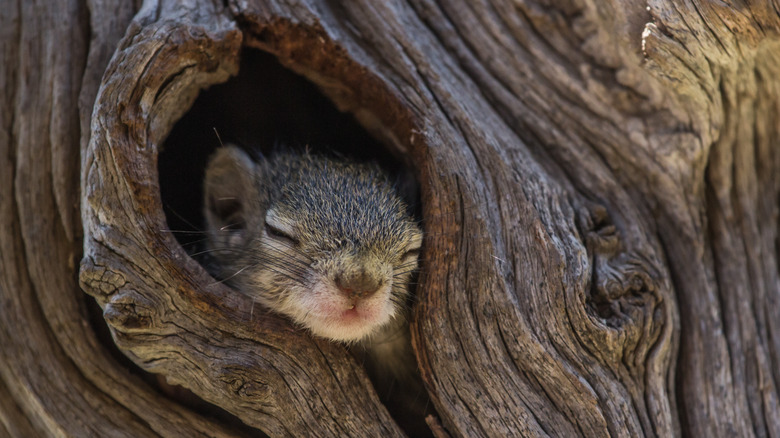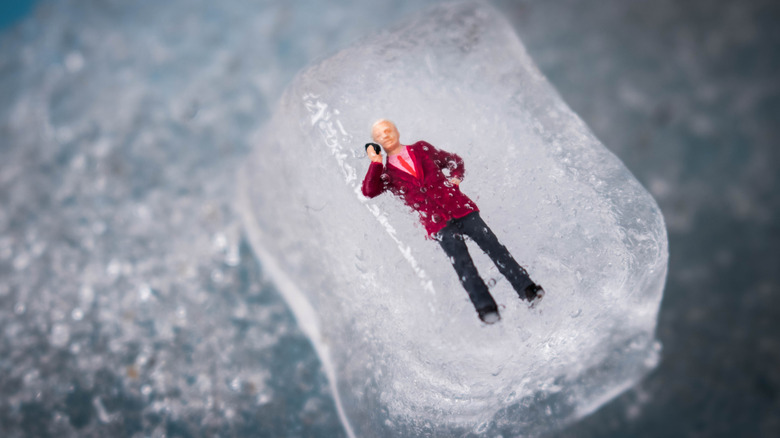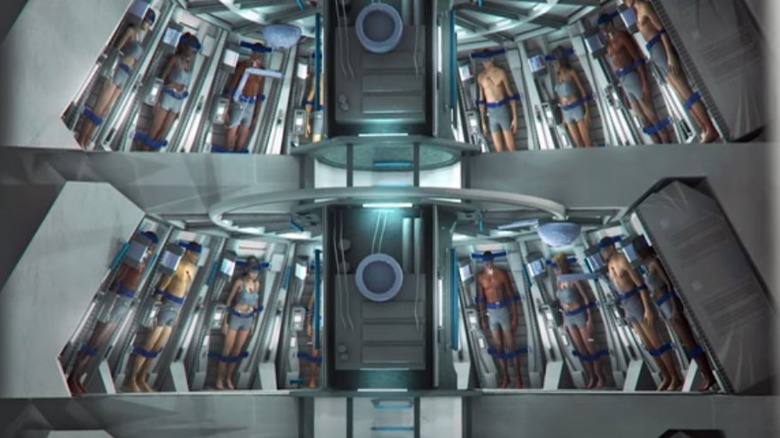Could A Human Hibernate If They Wanted To?
Imagine going to sleep as winter starts and waking up fresh and renewed as the spring flowers start to bloom. Or just skipping spring and the allergies that come with it and wake up to enjoy swimming pools and beach getaways. To be fair, if science could make human hibernation possible, chances are it would be for more practical reasons than skipping your least favorite season. So why would humans even want to hibernate?
First of all, there's space travel. According to Tomorrow Biostasis, one of the biggest barriers of space travel is distance. While it would "only" take seven months to get to Mars, Jupiter is six years away, and Pluto would require an almost 10-year-long trip. Cryogenic sleep (or induced hibernation), similar to what we've been seeing in sci-fi movies forever (think "Alien" and "2001: A Space Odyssey") would be very useful in long trips. Astronauts wouldn't have to deal with issues like muscle atrophy, food and water shortages, and boredom. Mental health, a major concern of long-term space travel, would also disappear. Plus, all snuggled up in a pod, astronauts would be safer from cosmic radiation, another major concern of long-term space travel. It all sounds pretty great, but just how realistic is it?
How does hibernation work?
Animals hibernate mainly for one reason: to conserve energy during a time when food might be scarce. By slowing down their metabolism, they are able to also reduce their minimum calorie intake needed for survival (via Australian Academy of Science). Metabolism slowdown affects the body in a number of ways. The heart rate slows down and so does the breathing, but even more importantly, body temperature drops. The Australian Academy of Science points out that this is the most important factor we would need to recreate if we humans were to hibernate.
As body temperature drops, this creates a state known as torpor, where the body requires almost no calories from food. This is because, as The Atlantic points out, most of the calories consumed by warm-blooded animals (including us humans) are used up to control body temperature and basic bodily functions. If you're sleeping and your body temperature goes down significantly, you could basically survive with almost no food. Some animals are remarkably good at this. For example, the Arctic ground squirrel has a body temperature of 27 degrees Fahrenheit during winter. That's a significant hurdle for humans. Our body temperature is set at 98.6 degrees, and anything below 70 degrees Fahrenheit is potentially fatal. Humans have survived with lower temperatures — just under 57 Fahrenheit degrees after falling into icy water — but these are considered extreme cases and not something the human body would be able to sustain for really long periods of time (via Live Science).
Scientists are already using cold temperature
Modern medicine already uses therapeutic hypothermia as part of treatment for certain conditions, but there are lots of limitations. For example, doctors can reduce body temperature down to 89 degrees Fahrenheit in newborns to treat conditions like oxygen deprivation. They can use it in adults to treat severe trauma like brain swelling and bleeding (via Smithsonian Magazine). Scientists are also looking at the power of cooling to gain some time. For example, cooling down the body very quickly after the heart stops beating could give the doctors a larger window of time to save that person's life. According to The Atlantic, the brain can remain alive for up to two hours after the heart stops beating if the body is cold enough.
In the case of a 4-year-old boy who survived falling into an icy lake, scientists believe the rapid cooling had basically caused an artificial state of torpor. Rather than the body being able to cool down by itself, the ice did that. But the cooling protected the organs and, more importantly, the brain. Which is why, despite the ordeal, the boy survived and recovered very well (per Smithsonian).
If scientists could find a way to use therapeutic hypothermia to help humans hibernate, it could forever change not only medicine but also space travel. Perhaps, however, the secret to hibernation for humans lies somewhere else: suppressing metabolism through anything from low-frequency radiation to specific dietary changes.
So is hibernation possible for humans?
Not quite yet, but NASA is looking into it. In 2014, they started researching a human-hibernation protocol and the possibility of placing a crew in "inactive, low-metabolic Torpor state" to facilitate travel to Mars (via The Atlantic). Humans could never simply "choose" to hibernate, but with the help of science, it might be possible one day to achieve hibernation. Just like in science fiction, this would require special crew modules or pods. This would be particularly important as human bodies would need to be supported through hibernation.
For example, The Atlantic explains, astronauts in hibernation couldn't simply stop eating and would have to be fed through a tube. Scientists would also have to figure out a way to lower temperature safely for weeks or months at a time; coming up with a drug that can lower core temperature safely would be a game changer according to scientists. So the pods could actually look very similar to what the pods in the "Alien" movie looked like, but with a lot more cables and machines involved.
If hibernation on-demand became a reality for astronauts, it could eventually become essential to save lives too. Putting humans into hibernation could give doctors even more time in the operating room. But for now, you're going to have to get through winter all on your own.



